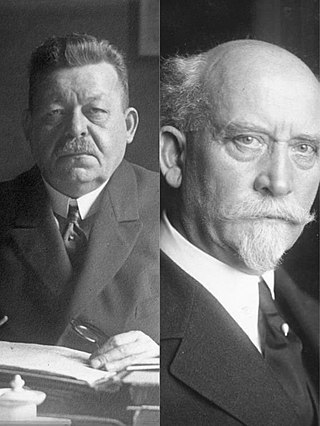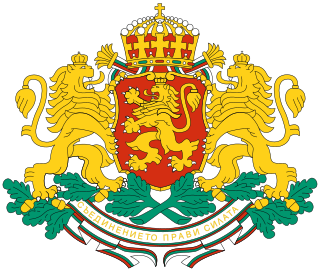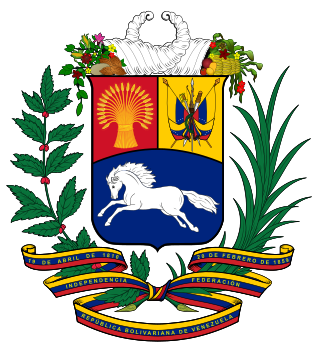 |
|---|
Constituent Assembly elections were held in Peru on 18 June 1978. [1] The American Popular Revolutionary Alliance emerged as the largest party, winning 37 of the 100 seats. [2]
 |
|---|
Constituent Assembly elections were held in Peru on 18 June 1978. [1] The American Popular Revolutionary Alliance emerged as the largest party, winning 37 of the 100 seats. [2]
 | ||||
|---|---|---|---|---|
| Party | Votes | % | Seats | |
| American Popular Revolutionary Alliance | 1,240,674 | 35.33 | 37 | |
| Christian People's Party | 835,285 | 23.79 | 25 | |
| Worker Peasant Student and Popular Front | 433,413 | 12.34 | 12 | |
| Revolutionary Socialist Party | 232,520 | 6.62 | 6 | |
| Peruvian Communist Party | 207,612 | 5.91 | 6 | |
| Popular Democratic Unity | 160,741 | 4.58 | 4 | |
| National Front of Workers and Peasants | 135,552 | 3.86 | 4 | |
| Christian Democrat Party | 83,075 | 2.37 | 2 | |
| National Union Party | 74,137 | 2.11 | 2 | |
| Pradist Democratic Movement | 68,619 | 1.95 | 2 | |
| Socialist Revolutionary Action | 20,164 | 0.57 | 0 | |
| Reformist Democratic Party | 19,594 | 0.56 | 0 | |
| Total | 3,511,386 | 100.00 | 100 | |
| Valid votes | 3,511,386 | 84.15 | ||
| Invalid/blank votes | 661,576 | 15.85 | ||
| Total votes | 4,172,962 | 100.00 | ||
| Registered voters/turnout | 4,978,831 | 83.81 | ||
| Source: PDBA | ||||

The Peruvian Communist Party (Marxist–Leninist) is an anti-revisionist communist party in Peru. It was founded in January 1964 following a split in the Peruvian Communist Party, and was originally known as the Peruvian Communist Party – Red Flag.
Revolutionary Socialist Party, was a political party in Peru formed in November 1976 by a group of radical army officers who had been active in the "first phase of the revolution" under Velasco Alvarado and who subsequently advocated a return to the objectives of the 1968 coup.

Federal elections were held in Germany on 19 January 1919, although members of the standing army in the east did not vote until 2 February. The elections were the first of the new Weimar Republic, which had been established after World War I and the Revolution of 1918–19, and the first with women's suffrage. The previous constituencies, which heavily overrepresented rural areas, were scrapped, and the elections held using a form of proportional representation. The voting age was also lowered from 25 to 20. Austrian citizens living in Germany were allowed to vote, with German citizens living in Austria being allowed to vote in the February 1919 Constitutional Assembly elections.

A constitutional referendum was held in France on 5 May 1946. Voters were asked whether they approved of a new draft Constitution proposed by the Constituent Assembly elected in 1945.

Constituent Assembly elections were held in the Democratic Republic of Georgia between 14 and 16 February 1919. The electoral system used was party-list proportional representation using the D'Hondt method in a single nationwide district. The result was a victory for the Social Democratic Labour Party of Georgia, which won 81% of the vote, and 109 of the 130 seats. In by-elections held in spring, they lost four seats and the Armenian Party in Georgia–Dashnaktsitiuni and the Georgian National Party both won seats.

Constituent Assembly elections were held in Bulgaria between 1 and 30 January 1879, although only 117 of the 231 members of the Assembly were elected during this period. It followed the country's liberation from the Ottoman Empire, and saw the Conservative Party and the Liberal Party emerge as the two main parties. The Assembly was opened on 10 February, and convened in Veliko Tarnovo to ratify the country's first constitution, known as the Tarnovo Constitution, on 16 April. The parliament was later transferred to Sofia, which became the capital of the country.

Constituent Assembly elections were held in Honduras on 12 February 1965. The Constituent Assembly subsequently elected Oswaldo López Arellano as president.

Constituent Assembly elections were held in Honduras on 26 January 1936.

Constituent Assembly elections were held in Costa Rica on 8 December 1948, following the Costa Rican Civil War. The result was a victory for the National Unity Party, which won 34 of the 45 seats. Voter turnout was 47.5%. The assembly drew up the 1949 constitution.

General elections were held in Costa Rica on 1 April 1917. Federico Tinoco Granados had seized power in a military coup in January and was the only candidate in the presidential election. The elections were considered to be fraudulent and although former president Rafael Yglesias Castro received 249 votes in Alajuela, they were recorded as invalid ballots. Voter turnout was reported to be 69.2% in the presidential election and 67.6% in the parliamentary election.

General elections were held in the Dominican Republic on 20 December 1962. They were the first after the end of the Trujillo dictatorship two years earlier, and are generally regarded to be the first free elections in the country's history.

A referendum on the presidential term and national and regional governors was held in Venezuela on 15 December 1957. Voters were asked whether they approved of President Marcos Pérez Jiménez remaining in power without fresh elections, and appointing government nominees as members of the national parliament, regional assemblies and local councils. Jiménez had been installed as President after the military rejected the results of the 1952 Venezuelan Constituent Assembly election. With the referendum held under non-democratic conditions, the measures were reportedly approved by 86.7% of voters.

A referendum on convening a Constituent Assembly was held in Venezuela on 25 April 1999. Voters were asked two questions;

Constituent Assembly elections were held in Venezuela on 27 October 1946, following a coup the year before which launched El Trienio Adeco. The result was a victory for Democratic Action, which won 137 of the 160 seats in the Assembly. Voter turnout was 86.6%.

Constituent Assembly elections were held in Venezuela on 25 July 1999, following a referendum in April on convening one. For the election two large coalitions were created; Patriotic Pole, which consisted of the Fifth Republic Movement, the Movement for Socialism, Fatherland for All, the Communist Party of Venezuela, the People's Electoral Movement and some other minor parties, and Democratic Pole consisting of Democratic Action, Copei, Project Venezuela and Convergencia. The result was a victory for Patriotic Pole, which won 121 of the 128 seats, whilst an additional three seats were taken by representatives of indigenous communities elected by indigenous associations. Each voter had 10 votes. Voter turnout was 46.2%.

Constituent Assembly elections were held in Austria on 16 February 1919.
Elections for the Constituent Assembly were held in Denmark on 5 October 1848. Of the 158 seats in the Assembly, 114 were elected and 44 appointed by the King. An additional 31 candidates were to come from the Duchy of Schleswig but were not elected due to the First Schleswig War.

General elections were held in Peru on 9 June 1963 to elect the President and both houses of the Congress after the results of the 1962 elections were annulled following a military coup. Supported by Popular Action and the Christian Democrat Party, Fernando Belaúnde Terry won the presidential election with 39% of the vote, whilst the American Popular Revolutionary Alliance emerged as the largest party in both houses of Congress.

Elections for the Democratic Constituent Congress were held in Peru on 22 November 1992, following a self-coup by President Alberto Fujimori on 5 April. The elections were boycotted by the American Popular Revolutionary Alliance, the second largest party in the Chamber of Deputies, and were won by Fujimori's Cambio 90–New Majority alliance, which took 44 of the 80 seats.

The Farmers' Assemblies was a conservative political party in Estonia. Led by Konstantin Päts, it was one of the ruling parties during most of the interwar period.